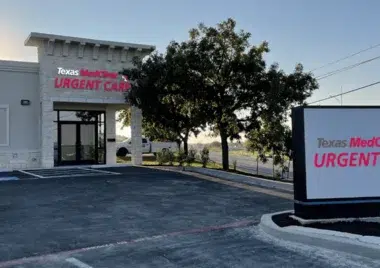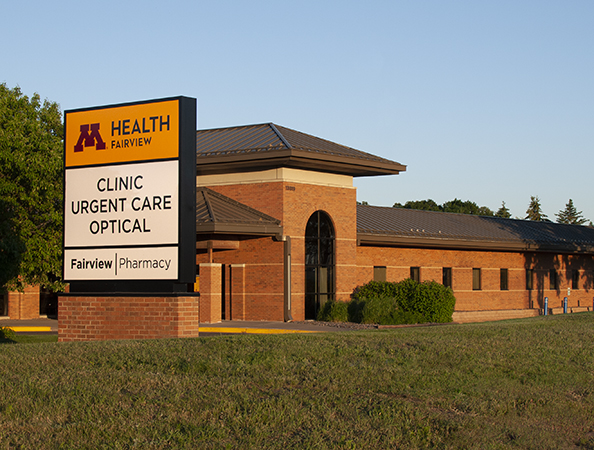Essential Services Given by Clinics Specializing in Urgent Care
Essential Services Given by Clinics Specializing in Urgent Care
Blog Article
Recognizing the Duty of Urgent Treatment in Giving Timely Therapy for Non-Life-Threatening Problems
Urgent treatment centers have actually emerged as an essential element of the medical care landscape, attending to the immediate requirements of people with non-life-threatening conditions. Recognizing the nuances of immediate care might dramatically affect person outcomes and the general performance of health care distribution.
What Is Urgent Care?
Urgent treatment describes a category of clinical solutions designed to attend to non-life-threatening problems that require instant focus. These facilities act as an intermediary between main care physicians and emergency clinic, using a practical alternative for patients who require punctual care without the considerable waiting times usually connected with emergency departments.
Immediate care centers are normally staffed by physician, including physicians, registered nurse practitioners, and physician assistants, who are educated to detect and treat a broad variety of problems. Common services given by these centers include therapy for small injuries, illnesses, and infections, in addition to analysis examinations such as X-rays and research laboratory job.
The availability of immediate care is a key variable in its appeal, as several centers run past routine workplace hours, consisting of weekends and nights. This extensive schedule allows clients to receive prompt care when their primary treatment service provider may not be available. In addition, urgent care centers frequently accept walk-in patients, removing the requirement for consultations. On the whole, urgent care plays an essential duty in the health care system, making certain individuals can access essential medical solutions immediately and successfully.

When to seek care at an immediate treatment facility instead of a primary treatment medical professional or an emergency area,Several individuals might discover themselves uncertain about. Immediate treatment is developed to address non-life-threatening problems that need timely focus however are not serious sufficient to warrant an emergency space visit.
Generally, one ought to consider urgent take care of issues such as small fractures, sprains, cuts calling for stitches, or infections like urinary tract infections. Furthermore, cool or flu signs, breakouts, and allergic responses can additionally be appropriately handled in this setup.
It is necessary to keep in mind that urgent care is not appropriate for dangerous emergency situations, such as upper body pain, problem breathing, or serious blood loss, which require immediate emergency clinic intervention.
People who do not have access to a health care physician or can not secure a prompt consultation may also benefit from urgent treatment solutions. Eventually, understanding when to utilize immediate care can bring about more effective healthcare distribution, enabling patients to receive the ideal degree of treatment based upon their specific wellness demands.
Advantages of Urgent Care Centers
Picking immediate care centers for non-life-threatening conditions uses numerous benefits that boost client experience and ease of access. One primary advantage is the reduced delay times contrasted to conventional emergency clinic. Urgent care centers normally run on a first-come, first-served basis, enabling people to obtain timely medical focus without the lengthy hold-ups commonly connected with medical facility settings.
Additionally, urgent care centers supply extended hours, including weekend breaks and evenings, suiting individuals with differing schedules. This adaptability ensures that people can look for treatment when it is most practical for them, further promoting prompt treatment.

Furthermore, these centers usually use an extensive variety of solutions, consisting of diagnostic tests and minor procedures, all under one roof covering. This consolidation of services not only improves the individual experience yet additionally promotes a more natural method to taking care of non-life-threatening wellness problems, ultimately profiting overall patient outcomes.
Common Conditions Treated
At immediate care centers, a variety of non-life-threatening problems can be effectively treated, providing clients with prompt and available clinical assistance. These facilities are especially skilled at addressing problems that require timely interest yet do not posture a prompt danger to life or arm or leg.
Usual problems treated at immediate care facilities consist of small injuries such as fractures, strains, and pressures. Additionally, they manage ailments like colds, influenza, and infections, including urinary system tract infections and sinusitis. Skin conditions, ranging from breakouts to insect attacks, are also often addressed. Immediate treatment facilities are geared up to carry out required analysis tests, such as X-rays and laboratory tests, enabling them to supply detailed care.
Additionally, immediate treatment companies can carry out inoculations, aiding to stop the spread of transmittable illness - Urgent Care. They additionally supply services for minor treatments, such as suturing wounds or draining pipes abscesses. By using these diverse solutions, urgent care centers play a vital function in linking the space between primary treatment and emergency solutions, ensuring clients get prompt therapy for a variety of problems without the need for long haul times generally linked with emergency Find Out More spaces
Exactly How Urgent Treatment Sustains Medical Care System
Urgent treatment centers play an essential function in supporting the general medical care system by alleviating the problem on emergency situation departments and supplying prompt accessibility to healthcare for non-life-threatening conditions. By managing instances such as small injuries, infections, and diseases, immediate care facilities allow emergency situation divisions to concentrate on more essential people calling for immediate interest.
Additionally, immediate treatment facilities boost healthcare access, providing extensive hours and an easier alternative to conventional primary care settings. This ease of access is specifically useful for individuals that may not have a routine doctor or who need instant therapy beyond typical office hours. Consequently, immediate care facilities efficiently decrease wait times and boost client fulfillment.
Furthermore, immediate care facilities contribute to set you back savings for both clients and the health care system by offering lower-cost solutions compared to emergency departments. This monetary effectiveness is essential in a period of increasing healthcare prices, allowing clients to obtain needed care without sustaining excessively high expenses.
Conclusion
To conclude, urgent treatment centers play an important function in the health care system by providing punctual therapy for non-life-threatening problems. By linking the space in between medical care and emergency situation spaces, these facilities ensure that people get prompt clinical focus without the prolonged wait times usually connected with emergency situation divisions. The accessibility and effectiveness of immediate treatment facilities add substantially to alleviating the overall problem on healthcare resources, enhancing patient results, and advertising a more reliable healthcare shipment system.
Urgent treatment facilities have actually emerged as a vital component of the health care landscape, dealing with the instant requirements of clients with non-life-threatening conditions. Urgent care check outs normally sustain lower out-of-pocket expenditures contrasted to emergency department website link sees, making treatment extra inexpensive for people without compromising high quality. Urgent care centers are furnished to do required analysis tests, such as X-rays and laboratory tests, enabling them to offer detailed care.
By offering these varied solutions, urgent treatment centers play a vital role in connecting the gap between primary treatment and emergency situation services, ensuring clients obtain prompt therapy for a wide variety of conditions without the requirement for long delay times usually associated with emergency areas.
Moreover, urgent treatment centers enhance healthcare accessibility, supplying extensive hours and an extra hassle-free option to conventional primary care setups.
Report this page